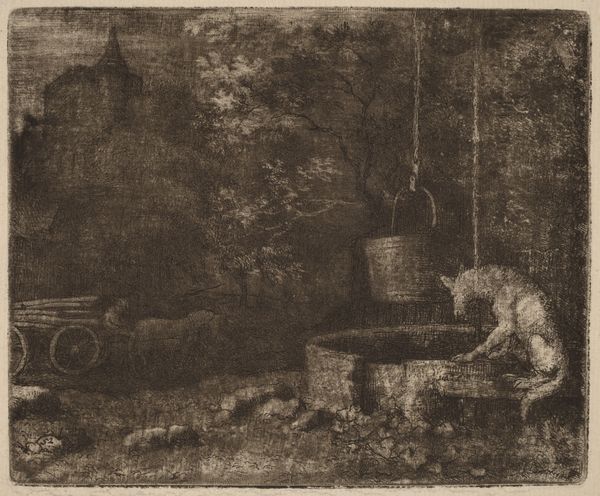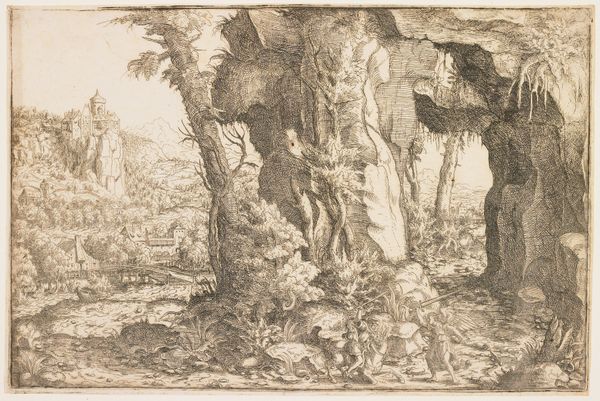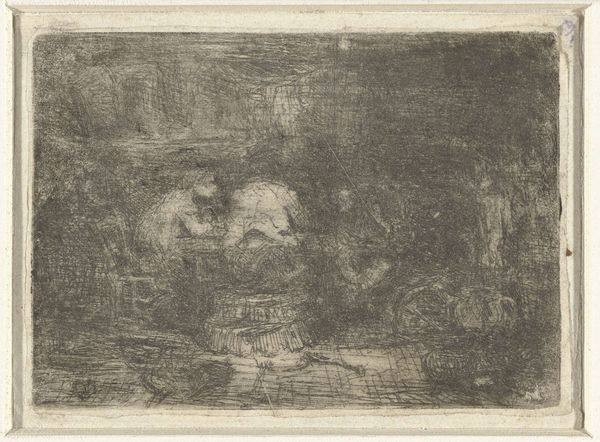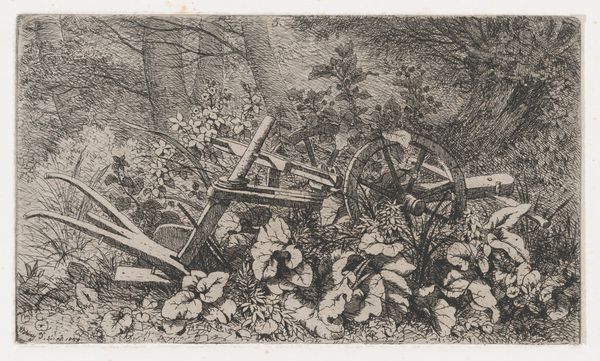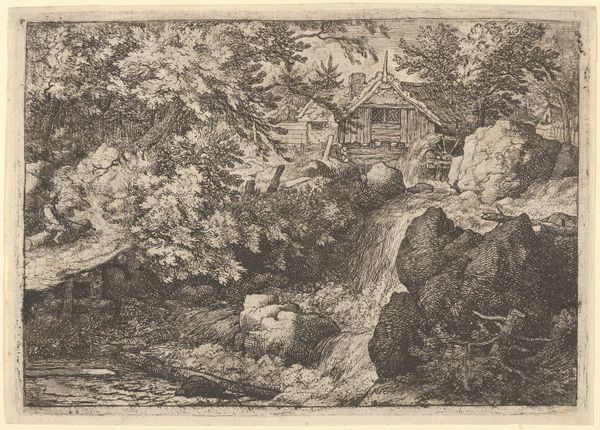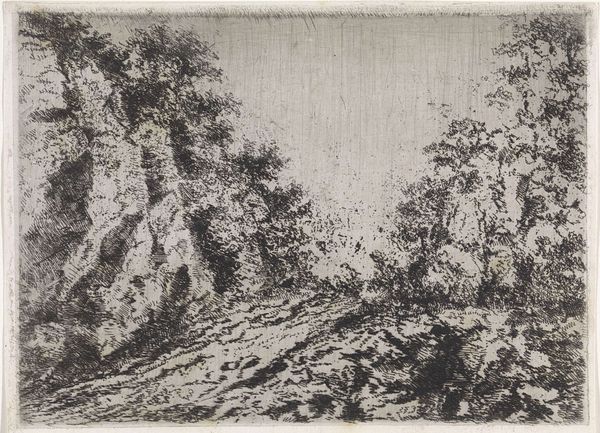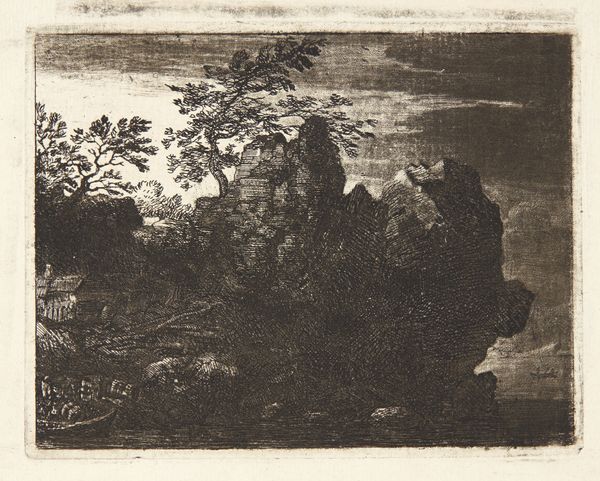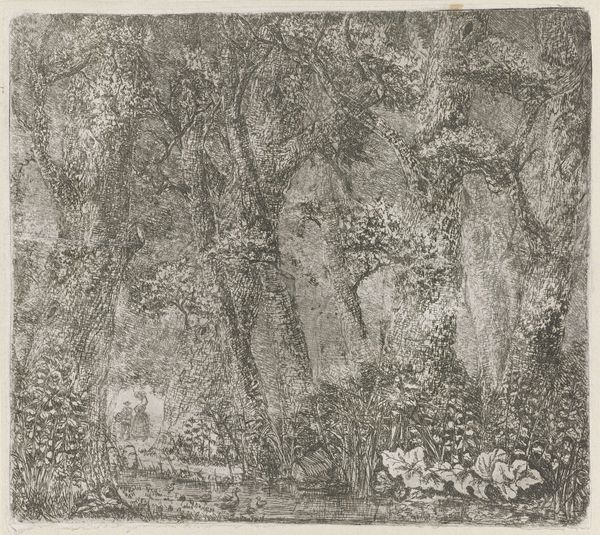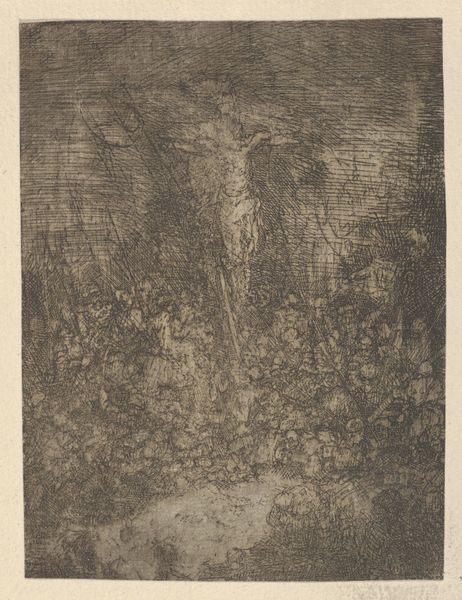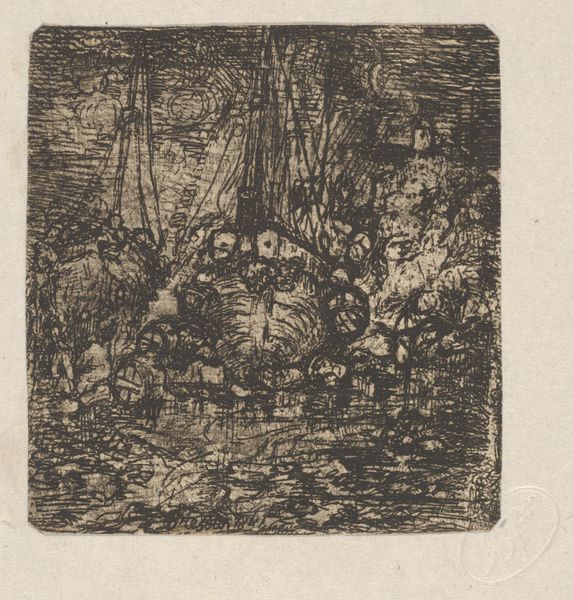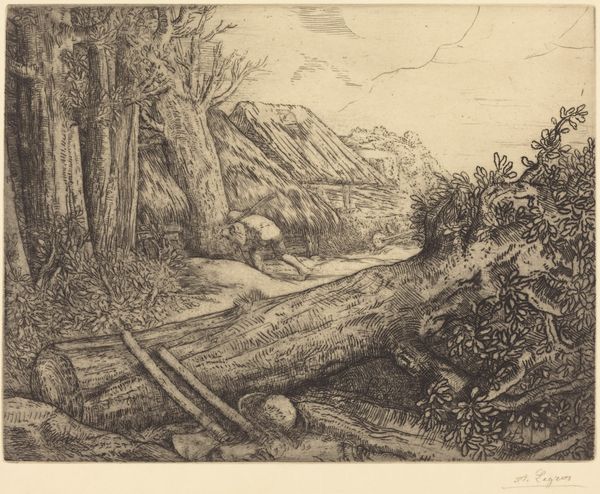
print, etching
#
toned paper
#
ink painting
# print
#
etching
#
pencil sketch
#
charcoal drawing
#
possibly oil pastel
#
charcoal art
#
pencil drawing
#
watercolour illustration
#
pencil art
#
watercolor
Dimensions: 97 mm (height) x 118 mm (width) (plademaal)
Editor: We’re looking at "Renard narrer ulvens kone" by Allaert van Everdingen, created sometime between 1621 and 1675. It’s an etching, and it feels incredibly detailed for a print. The overall tone seems quite melancholic, almost gothic. What elements stand out to you? Curator: Initially, it's the use of line that captivates. Note the density of etching strokes creating deep shadows, juxtaposed with areas of sparse linework allowing the toned paper to breathe. This contrast models the forms and dictates the overall tonal value. What affect does that high contrast produce for you? Editor: I see how the shading defines the shapes. The well, for instance, appears very solid, and the details on the bucket are remarkably clear because of it. It gives the scene a sense of depth, too, doesn't it? Curator: Precisely. Consider the strategic deployment of hatching. Observe how Van Everdingen manipulates the direction and frequency of these lines to sculpt not just the objects themselves – the well, the bucket – but also the atmospheric conditions of the scene. The effect of light filtering through leaves, for instance. Editor: It’s fascinating how much information is conveyed with so few elements. Curator: Indeed. Notice, as well, the composition. The placement of the well slightly off-center, balanced by the implied narrative happening within the frame. The building on the horizon leads the viewer’s eye to this focal point. How do you interpret the relationship of the depicted setting, well with a fox in the foreground and the structure on the background? Editor: It feels like everything in the composition is carefully planned to create a cohesive narrative and direct our gaze, with great precision regarding details and shades. Curator: I agree entirely. Ultimately, it reveals how careful formal manipulation creates affect. Editor: Thank you, seeing it through this lens has been enlightening. Curator: My pleasure; considering solely the components themselves, rather than exterior contextualization, is, to me, the surest path to truly 'seeing'.
Comments
No comments
Be the first to comment and join the conversation on the ultimate creative platform.
